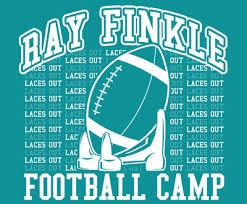Minnesota's Missed FG: It Wasn't the Laces

Blair Walsh was right.
It wasn't the holder's fault.
The Minnesota Vikings suffered an 10-9 loss to Seattle's Seahawks in arctic temperatures for a more frequent reason than what happened at game's end.
But unlike Ray Finkle and his parents, the Vikes' kicker knew his shanked 27-yard last-minute field goal attempt had absolutely nothing to do with an old myth:
The effects of a football's laces-in or laces-out are insignificant at close range, as distance -- in this case, 27 yards -- isn't a major factor.
Here's an excerpt from an article in Popular Mechanics, Sep 1992, Vol 169 No 9, entitled The Mechanics of a Field Goal, on Page 39:

The mental aspect of a kicker noticing laces-in or laces-out in mid-motion is the only aspect that could come into play here. As the Popular Mechanics article stated, laces-in is the "next ideal."
Many kickers buy into Ray Finkle's old bromide because that's what's been drilled into them by their coaches, virtually none of whom are physics majors. It's a classic example of Stephen Colbert's ersatz word, truthiness.
Well, let's feel what another book has to say.
It's Football Physics: The Science of the Game, and here's an excerpt from Page 165:

The hard fact is -- as Chuck Zodda reveals at Inside the Pylon -- Walsh's anchor leg planted too close to the ball, disrupting the rest of his mechanics:
While the Cincinnati Bengals had to rely on abject stupidity to call an end to their season, this game's reality is Minnesota simply dialed up an all-too-common Adrian Peterson fumble, ultimately giving Seattle the field goal that put them into the next round.
Toss in Peterson's anemic 2.0 yards per carry after 23 touches, and the Vikings had zero margin for error, which put Walsh in a position to exceed. And, in spite of a 3-for-3 performance up to the final 26 seconds, he did.
Meanwhile, the Seahawks did what championship-caliber teams do. They found a way.
Only two teams in NFL history have made it to at least three straight Super Bowls, and Seattle's goal to become the third remains alive. They've got stiffer challenges ahead, but winning games like this is what it takes to become a legend.
And that's no myth.


